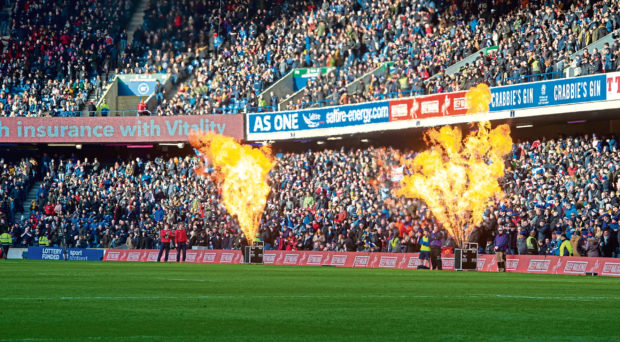One of the recurring messages in the COVID environment is that sport is nothing without fans. And, although the absence of supporters doesn’t seem to have harmed Scotland’s football team in recent weeks, there’s an air of anti-climax about their rugby counterparts.
I have a confession to make. For the last 30 years, I’ve been a compulsive viewer of the SRU’s autumn Tests and watched through thick and (mostly) thin. But on Saturday, faced with the prospect of having to pay extra for the Scots’ meeting with Italy in Florence, I decided enough was enough. I’m already shelling out cash for Sky and for BT Sport – and I frequently find myself questioning whether the expense for these channels is really justified.
But now, I am being asked to sign up to Amazon Prime to follow Gregor Townsend’s troops. And, if I want to enjoy live coverage of Glasgow and Edinburgh in the PRO14 competition, I have no option but to set up a contract with Premier Sports.
Sorry, but this is hardly the way to treat loyal fans, who are not being allowed into matches at the moment and for the foreseeable future. Yet it is part of a worrying pattern when it comes to the behaviour of the blazerati at Murrayfield.
For starters, it doesn’t inspire confidence that the governing body has yet to release its accounts for the 2019/20 financial year when these should have been made public months ago.
And the SRU’s decision to axe child discounts for next year’s Six Nations Championships games – against Wales, Ireland and, yawn, Italy again – at Murrayfield is not only another short-sighted and depressing move, but one which also raises the question of the scale of the black hole within the sport in this country.
I recently interviewed Phil Anderton, the former chief executive of the SRU, who is now working at the R&A at St Andrews. A mercurial and charismatic character, Phil managed to create a genuine buzz around rugby and the autumn internationals and his efforts helped persuade more than 150,000 fans to attend three fixtures in as many weeks 20 years ago.
During his time at Murrayfield, there was a transparency about his actions and he could be approached directly and offered honest, straightforward answers to often tricky inquiries.
Sad to relate, there are no signs of that candour today. Obviously, Covid-19 has created massive problems for every strata of society and sport is no different. But when some sort of normality has returned, possibly next spring or by the summer, it will be more important than ever for a niche pursuit such as Scottish rugby to pull together.
I don’t discern any sign of that happening. Quite apart from rugby disappearing – outwith the Six Nations – from terrestrial TV, most grassroots clubs are fighting just to stay on an even keel and Scotland’s two professional entities have performed poorly in the PRO14. Yes, there are positive signs of progress in the Scotland ranks even if defeating Georgia, Wales and Italy hasn’t turned them into world-beaters.
But I wonder; how many others have followed me in refusing to pay any more to satellite broadcasters and how many youngsters are now finding other pursuits to follow? That is one of the lessons from cricket – when it moved to Sky, many viewers simply drifted away. And it was a decade or longer before some, but not all, of them returned amid the drama, thrills and passion of the 2005 Ashes series in England.
The SRU needs to get people engaged with the game, but it can’t achieve this without coverage which can be enjoyed by everybody. If there’s going to be bad news when the accounts are finally published, probably a few days before Christmas, it would be as well for the organisation to explain its long-term plan for responding to the COVID crisis in a frank and open fashion without any attempts to gloss over the cracks.
It must also recognise that developing interest among youngsters will be vital in the process. One of the side effects of Steve Clarke steering Scotland to the European Championships next summer is that football will dominate the sports pages all year round.
In 2021, we will also have the Olympics, the Ryder Cup, the World Cup T20 …a slew of high-profile events which will command centre stage. Rugby will have to work very hard to cling on to its existing audience and devise strategies to inspire new converts.
Next Sunday’s meeting between Scotland and France at Murrayfield should be an intriguing battle of wills between two expansive line-ups, who rarely fail to entertain, as they did in Edinburgh earlier this year.
But once again, the only TV coverage is on Amazon and Premier Sports. Which means a lot of us will be restricted to listening to the radio. A very frustrating state of affairs.
